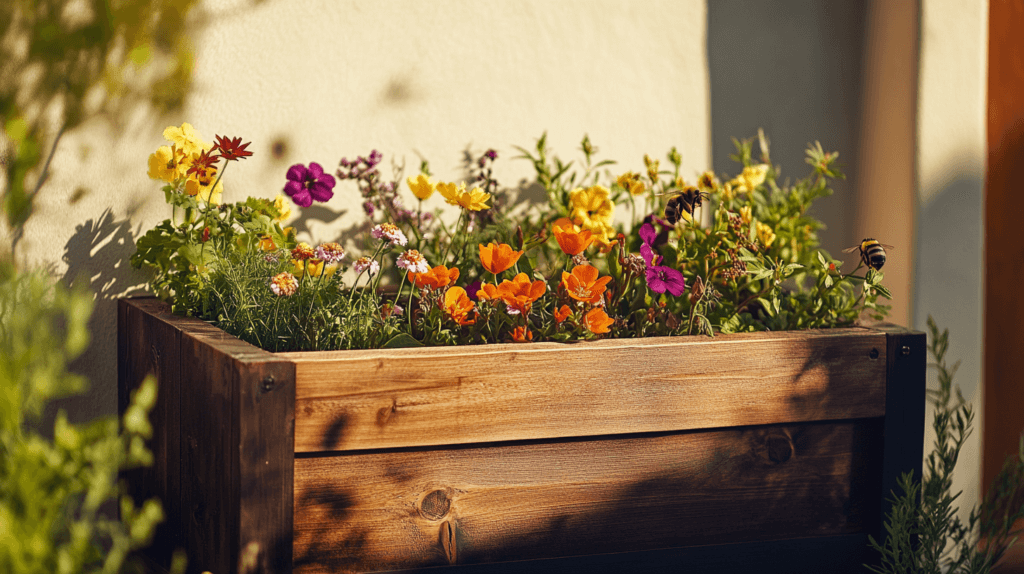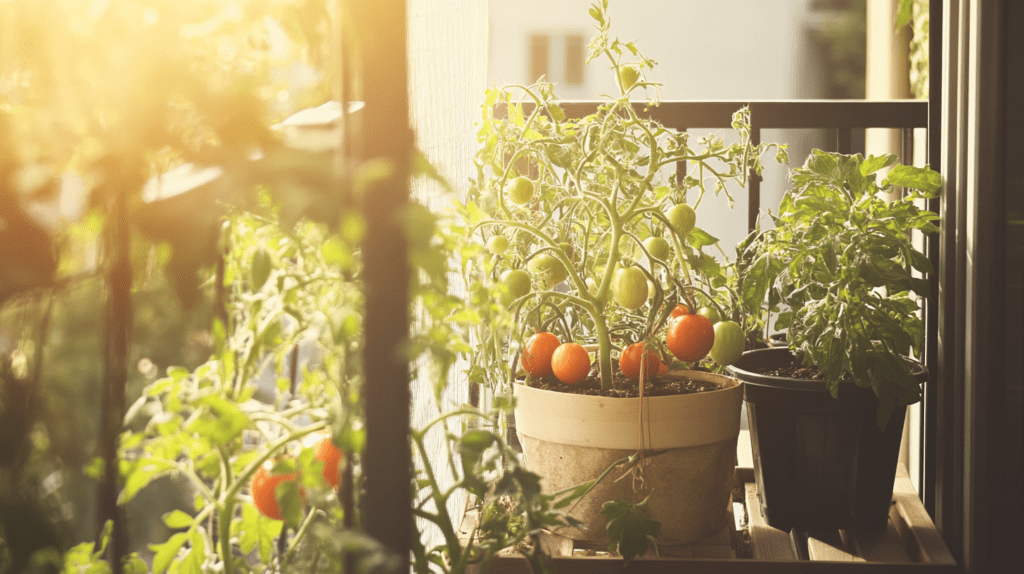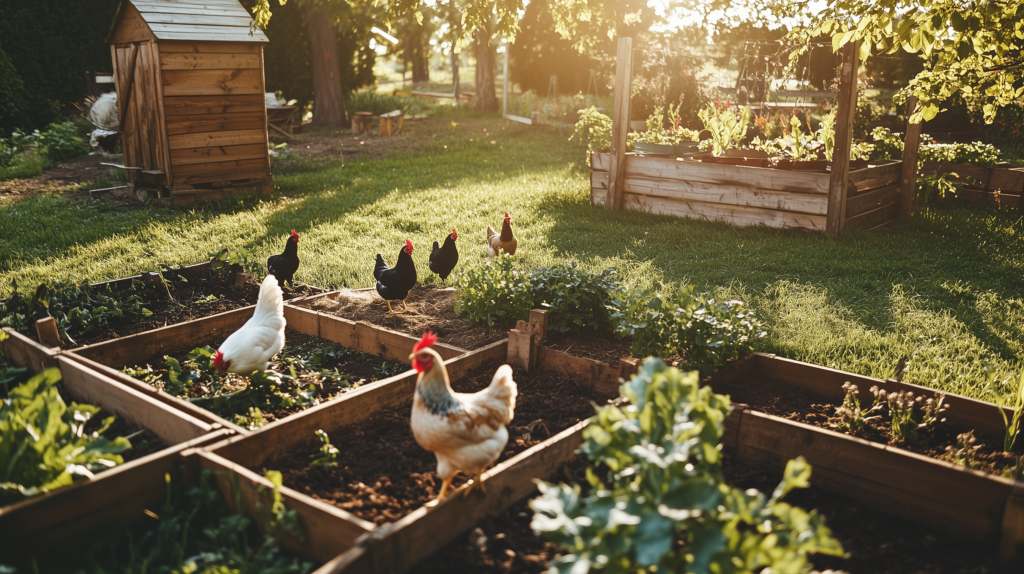This post may contain affiliate links, including those from Amazon Associates. If you make a purchase through these links, I may earn a commission at no additional cost to you. Learn more about our affiliate policy.
A few years ago, I started paying closer attention to the little visitors in my backyard: bees lazily buzzing around, butterflies drifting between flowers, and even the occasional hummingbird darting in and out. It struck me how alive my space felt when these pollinators were present.
But in an urban environment, with concrete and manicured lawns taking up most of the space, they don’t always have the resources they need to thrive.
That’s where pollinator gardens come in. Even in the smallest of spaces like a tiny backyard, a balcony, or even a few window boxes, you can create a welcoming environment for these essential creatures.
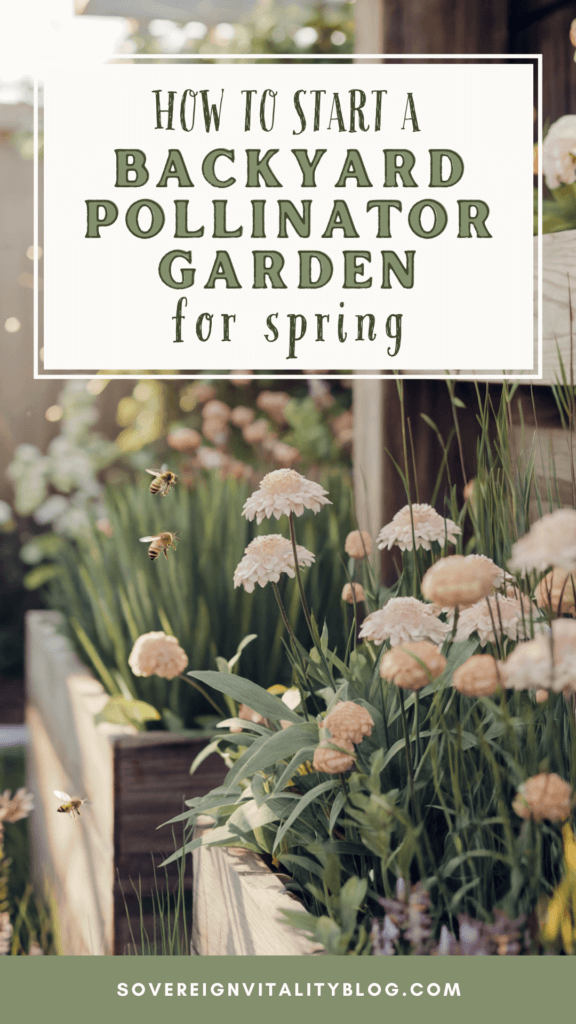
There’s something deeply grounding about tending to plants, watching them flourish, and seeing bees, butterflies, and hummingbirds visit daily. It transforms your space into a small oasis, a little pocket of nature in the middle of an urban world.
And if you grow herbs or vegetables alongside your flowers, you’ll get an even bigger reward: better harvests and a thriving, balanced mini-ecosystem.
If you’ve been thinking about creating a pollinator garden but aren’t sure where to start, this guide will walk you through the process step by step whether you have a backyard homestead, a balcony garden, or just a few square feet of outdoor space to work with.
Getting Started: How to Plan a Small-Space Pollinator Garden
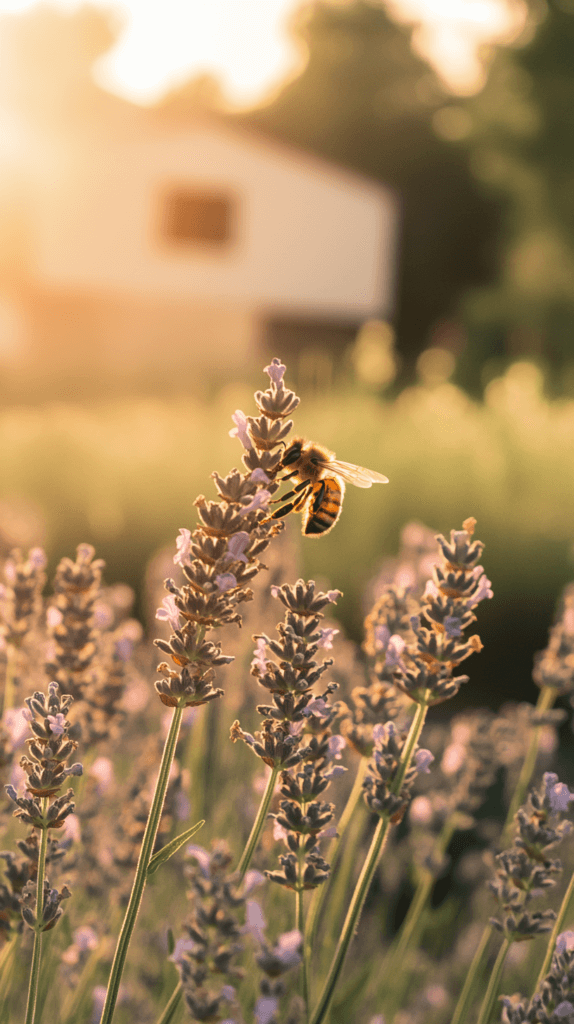
Understanding the Role of Pollinators
Pollinators are the invisible workforce of the natural world, quietly ensuring the survival of countless plants.
Bees, butterflies, hummingbirds, and even some beetles and moths transfer pollen from one flower to another, enabling plants to produce seeds and fruit. Without them, many of the foods we love wouldn’t exist in the same abundance.
In urban areas, pollinators face a tough challenge. Expanding cities mean fewer wildflowers, native plants, and safe spaces for them to feed and nest.
That’s why even the smallest effort to create a pollinator-friendly space makes a difference. By planting wildflowers even if you have just an apartment balcony, we’re giving them a much-needed food source and helping strengthen local ecosystems.
Choosing the Right Location
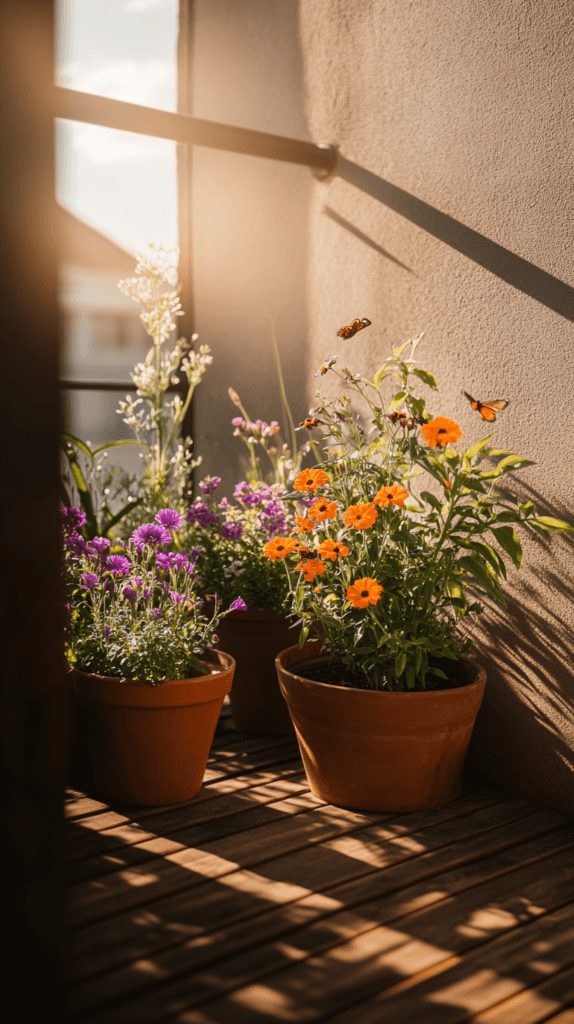
Picking the right spot for your pollinator garden is the first step. Even in small spaces, a little strategic planning goes a long way.
Sunlight Requirements
Most pollinator-friendly plants need at least six hours of direct sunlight a day to thrive. If you have a backyard, look for a spot that gets plenty of morning sun. Balconies and rooftops often have excellent sun exposure, making them great options as well.
If your space is mostly shaded, don’t worry—you can still plant shade-tolerant pollinator plants like columbine or woodland phlox. It’s all about working with what you have.
Wind Protection for Balconies and Rooftops
Balconies and rooftops tend to be windier than ground-level gardens, which can make it tough for delicate flowers to thrive. If you’re planting in an exposed area, consider adding a windbreak—this could be a small trellis, a row of taller plants, or even a piece of outdoor fabric or bamboo fencing to help block strong gusts.
Selecting the Right Containers and Planters
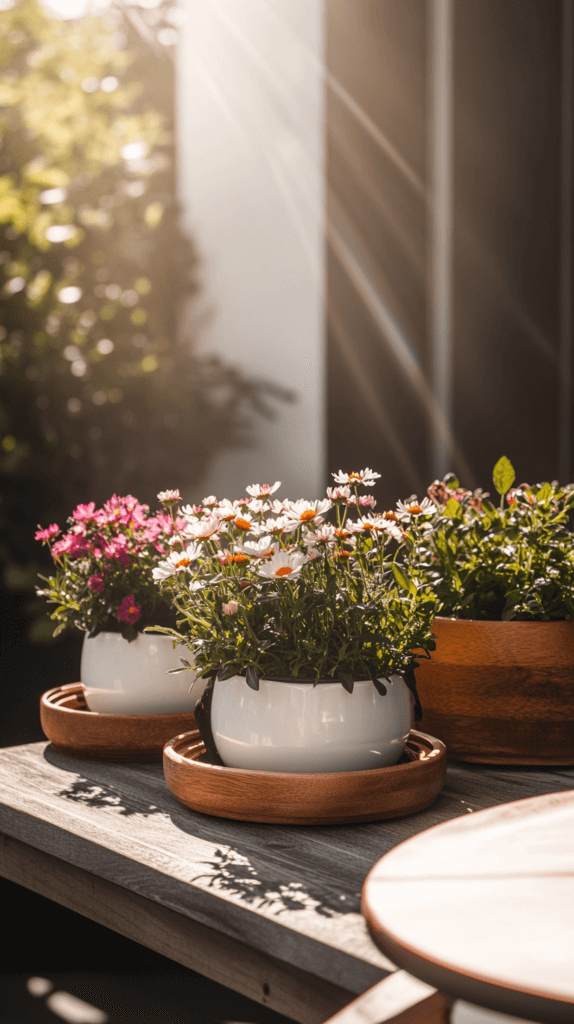
Container gardening is one of the best ways to create a pollinator-friendly space when ground planting isn’t an option. Choosing the right planters will set your garden up for success.
Types of Planters for Small-Space Gardens
- Raised Beds: If you have a backyard or rooftop space, raised garden beds are a great option. They provide more room for root growth and make watering and maintenance easier.
- Hanging Baskets: Ideal for balconies and patios, hanging baskets are perfect for trailing flowers like nasturtiums, which attract both bees and hummingbirds.
- Vertical Planters: Wall-mounted planters or tiered plant stands maximize vertical space and allow you to grow more flowers in a compact area.
- Railing-Mounted Pots: A great option for balconies, these attach to railings and make use of otherwise wasted space.
No matter which containers you choose, good drainage is key. Adding a layer of pebbles or using well-draining soil ensures your plants’ roots stay healthy.
Choosing the Best Plants for an Urban Pollinator Garden
Not all plants are equally beneficial to pollinators, and choosing the right ones makes a big difference in creating a low-maintenance, thriving garden. The best choices are native plants, which naturally support local pollinators and require less watering, fertilizing, and overall care than non-native species.
A well-planned pollinator garden provides blooms throughout the seasons, ensuring that pollinators have a continuous food supply. Even in a small space, you can select a mix of plants that flower in spring, summer, and fall, creating a balanced ecosystem that sustains pollinators year-round.
You can look up native pollinator plants for your area by visiting the National Wildlife Federation’s Native Plant Finder.
Low-Maintenance Herbs That Attract Pollinators
If you’re looking for beginner-friendly, multipurpose plants, herbs are a fantastic option. They attract pollinators while offering fresh flavors for cooking and natural remedies. Many herbs thrive in containers, making them perfect for balconies and small patios.
Best low-maintenance herbs for pollinators:
- Thyme – Small flowers attract bees, and it grows well with little water.
- Oregano – Produces delicate, nectar-rich flowers while being a great culinary herb.
- Mint – Loved by bees and butterflies, but keep it in a container to prevent spreading.
- Chives – Beautiful purple flowers that support pollinators while adding fresh flavor to meals.
- Rosemary – A hardy, evergreen herb that blooms early and provides nectar in cooler months.
Get more ideas for DIY vertical gardens for your backyard here.
Balcony and Rooftop Gardening Techniques for Pollinators
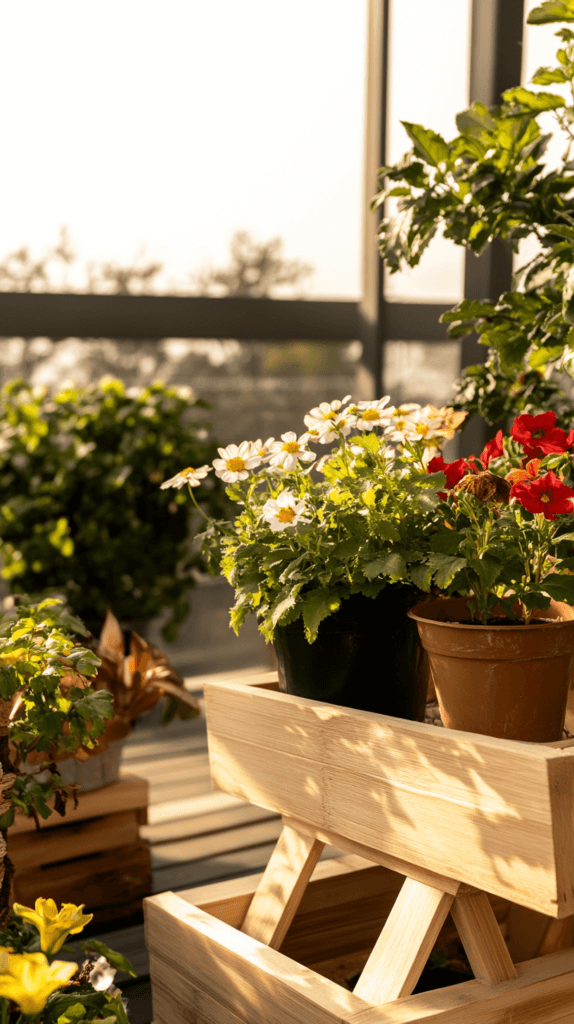
Even if you don’t have a backyard, you can still create a thriving pollinator garden on a balcony, patio, or rooftop. The key is maximizing space and ensuring plants have the right growing conditions.
Making the Most of Small Spaces
- Hanging baskets – Perfect for cascading flowers like nasturtiums and petunias, which attract both bees and hummingbirds.
- Railing planters – Utilize balcony railings to grow pollinator-friendly flowers without taking up floor space.
- Vertical gardens – Stack planters or install wall-mounted pots to create layers of blooms at different heights.
- Window boxes – Great for mixing upright and trailing flowers, offering pollinators a variety of feeding options.
Grouping containers together can create a microclimate that retains moisture, reducing the need for frequent watering. On windy rooftops or balconies, use larger, heavier containers or add a windbreak like a small trellis to protect delicate plants.
How to Maintain a Thriving Pollinator Garden
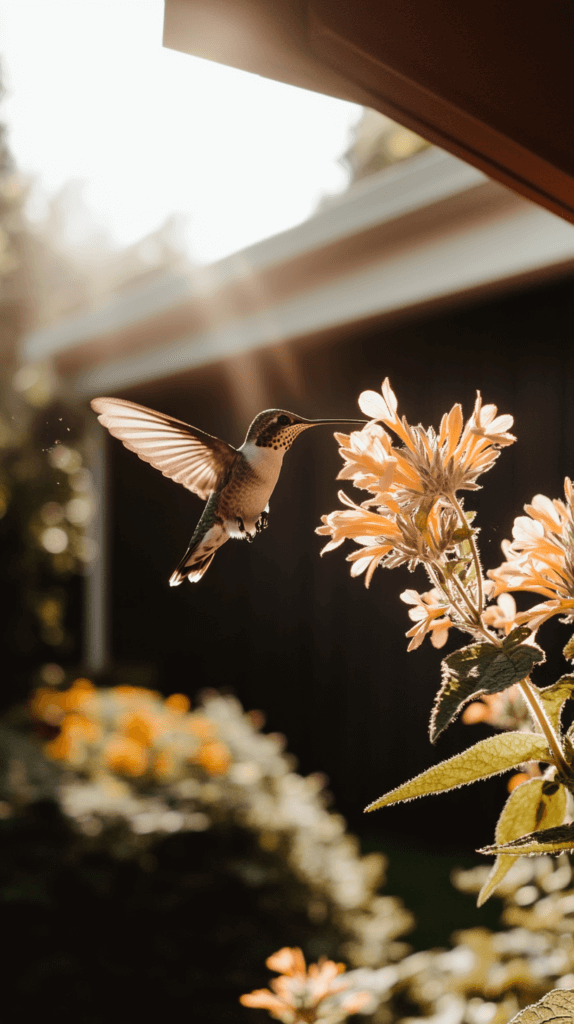
Once your pollinator garden is established, keeping it healthy is all about simple, low-effort maintenance. The key is to mimic natural ecosystems—letting plants grow freely, avoiding chemicals, and making small adjustments as needed.
Watering Tips: Keeping Plants Hydrated Without Overwatering
Most pollinator-friendly plants prefer deep, infrequent watering rather than shallow daily watering. Overwatering can weaken plants, making them more susceptible to disease and pests.
- Water early in the morning to allow plants to absorb moisture before the heat of the day.
- If the top inch of soil is dry, it’s time to water. Stick your finger in the soil to check.
- Use mulch around the base of plants to retain moisture and reduce watering needs.
- Self-watering containers or a drip irrigation system can help maintain steady hydration in container gardens.
Pollinator plants that are drought-tolerant, like lavender, echinacea, and sedum, will thrive even if you occasionally forget to water.
Creating a Safe Habitat for Pollinators
Beyond flowers, pollinators need water and shelter to truly thrive. Adding a few small habitat features makes your garden even more inviting.
- A shallow water dish with pebbles gives bees a safe place to drink without drowning.
- A small log pile or leaf litter provides shelter for butterflies and beneficial insects.
- A bee hotel made from hollow bamboo tubes or drilled wood gives solitary bees a nesting site.
Combining Pollinator Gardens with Vegetable Gardens
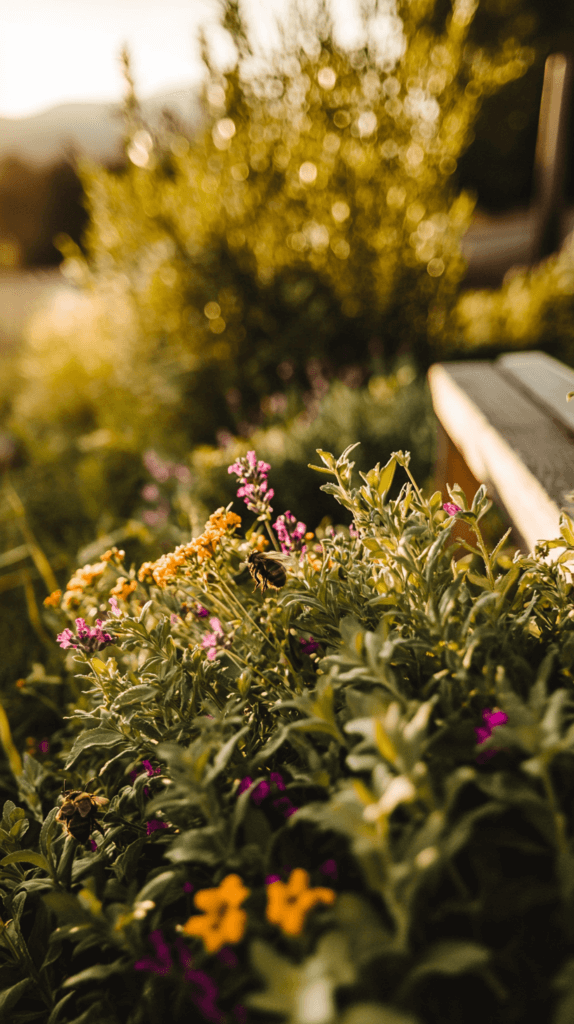
One of the best things about a pollinator garden is that it can do double duty—supporting both flowers and food production. Many fruits and vegetables depend on pollinators to increase their yield, and planting flowers alongside edible crops can lead to better harvests.
How to Integrate Pollinator Plants into an Edible Garden
Adding pollinator-friendly plants to a vegetable garden is easier than you might think. The simplest method is companion planting, where flowers and herbs grow alongside vegetables to improve pollination, deter pests, and enhance overall garden health.
- Marigolds and calendula are excellent companions for tomatoes and peppers, attracting beneficial insects while repelling pests.
- Basil, rosemary, and chives serve a dual purpose—feeding pollinators while deterring aphids, mosquitoes, and cabbage moths.
- Yarrow and cosmos planted near squash and melons can help draw in bees, leading to higher fruit production.
The Best Vegetables to Grow Alongside Pollinator Plants
Some vegetables benefit more than others from nearby pollinator plants. Choose varieties that rely on bee pollination for the best results.
- Tomatoes – Though they can self-pollinate, they produce higher yields when bees help vibrate their flowers.
- Cucumbers – Require bees for pollination; planting flowers nearby improves fruit production.
- Squash and zucchini – Their large, pollen-rich flowers benefit greatly from a thriving pollinator population.
- Strawberries and blueberries – Pollinators help increase berry size and quality.
By integrating flowers and pollinator-attracting herbs among your vegetable crops, you’re creating a balanced ecosystem where everything thrives together.
Attracting Pollinators to Your Garden
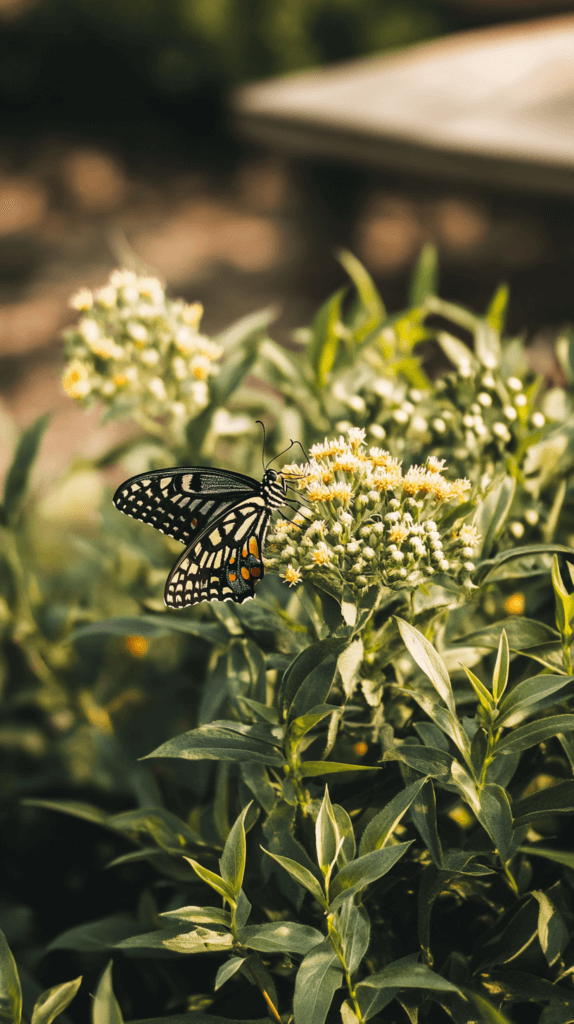
Different pollinators are drawn to different flowers, so selecting a mix of plants can help attract bees, butterflies, and hummingbirds to your space.
- Bees prefer blue, purple, and yellow flowers with ample nectar. Great options include lavender, salvia, and echinacea.
- Butterflies seek nectar-rich blooms and need host plants for their larvae. Plant milkweed, zinnias, and verbena to support them.
- Hummingbirds are drawn to red, orange, and tubular flowers with deep nectar reserves. They love fuchsia, honeysuckle, and bee balm.
Creating a low-maintenance pollinator garden is one of the simplest ways to support biodiversity while adding beauty and life to your space. Whether you have a backyard, a balcony, or just a few containers, choosing the right plants and setting up a pollinator-friendly habitat can make a big impact with minimal effort.
By selecting native, nectar-rich flowers, integrating pollinators into your vegetable garden, and following simple maintenance practices, your garden will thrive season after season. Even a small patch of blooms can attract bees, butterflies, and hummingbirds, helping to restore natural ecosystems right where you live.
Conclusion
Creating a low-maintenance pollinator garden is one of the simplest ways to support biodiversity while adding beauty and life to your space. Whether you have a backyard, a balcony, or just a few containers, choosing the right plants and setting up a pollinator-friendly habitat can make a big impact with minimal effort.
By selecting native, nectar-rich flowers, integrating pollinators into your vegetable garden, and following simple maintenance practices, your garden will thrive season after season. Even a small patch of blooms can attract bees, butterflies, and hummingbirds, helping to restore natural ecosystems right where you live.

